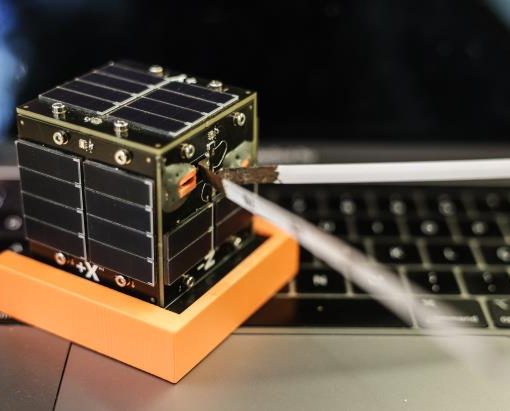On 16 February, the skies over Azurém witnessed the launch of a rocket developed by students from the Aerospace Engineering master’s degree course.
This project was carried out as part of the Launcher Design and Engineering course. In this first edition of the course, the lecturers proposed a water jet with compressed air as the propulsion method, as it is simpler and safer than chemical propulsion. The mark achieved is still far from the rocket’s full potential because, for safety reasons, only a pressure of just over 2 bar was tested. However, the data acquisition systems that allow acceleration, velocity and position to be obtained over time were successfully tested.
The parachute activation system also worked well in the preliminary tests. On the test flight, however, a technical problem caused it not to work. Despite the impact, it was possible to recover the navigation data and confirm that the rocket reached a maximum acceleration of 8.2g, a maximum speed of 75 km/h and an altitude gain of 29.0 metres. The propulsion duration was only 0.52 seconds, and most of the altitude gain was achieved after this moment, with the rocket already without propulsion.
The thrust of this type of rocket is obtained from the principle of conservation of quantity of motion. According to this principle, the rocket’s upward movement is achieved by creating a downward jet of water induced by compressed air.
The course lecturers Eurico Seabra, Francisco Brito and Miguel Azenha were pleased with the project, especially as it was carried out as part of an unprecedented course at UMinho’s School of Engineering and was carried out by students from very different backgrounds (degrees in Computer Science, Industrial Management, Electronics and Physics). After this kick-off, it is hoped that future editions of the course will be able to take higher flights, with more advanced and refined propulsion systems.









